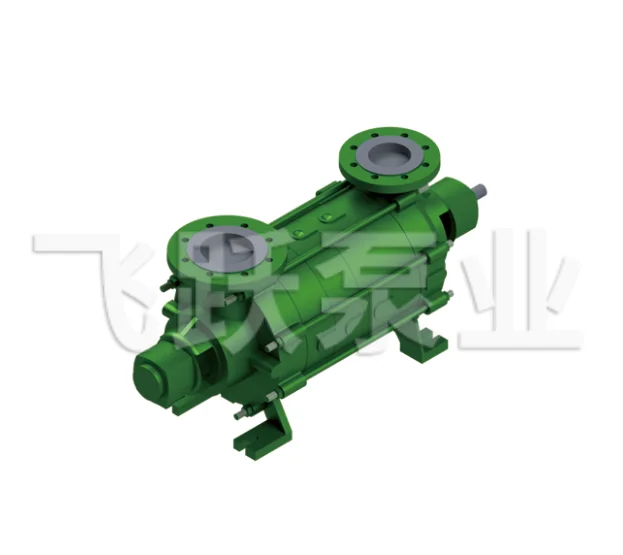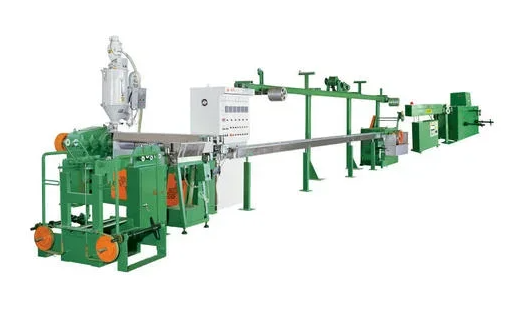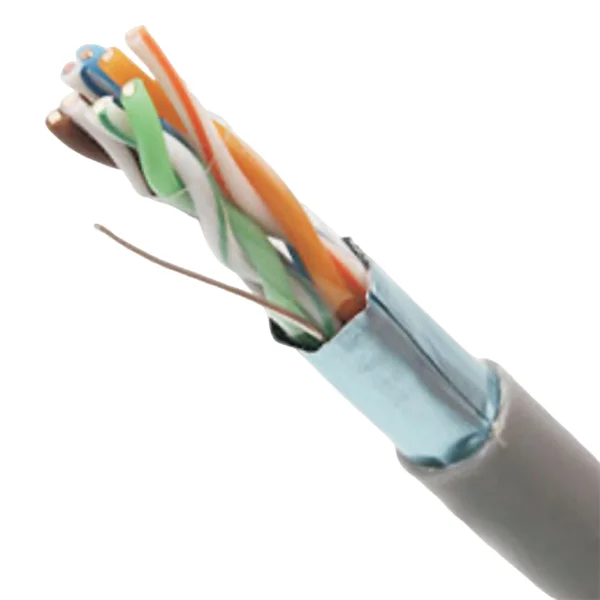Fluid Handling with Self-Priming Multistage Centrifugal Pump
A self-priming multistage pump is an advanced centrifugal pump that combines high efficiency with reliable self-priming capability. Unlike traditional centrifugal pumps that require manual priming or foot valves, a self-priming multistage pump can automatically evacuate air from the suction line before normal operation begins. In this blog post, Feiyue, as high performance multistage centrifugal pump factory, will share the structural features of self-priming multistage pump for sale, its performance capabilities, etc.
The design uses the side channel pump principle to achieve the exhaust function. When the pump starts, the liquid remaining inside the pump casing mixes with the air in the suction pipe to form a gas-liquid mixture. This mixture is then directed through the exhaust system at the discharge port, where the air is separated and expelled. As air removal continues, the suction line becomes filled with liquid, allowing the pump to transition smoothly to standard operation.
This self-priming process makes the multistage centrifugal pump especially useful for applications where consistent suction is required, such as in fuel transfer, offshore systems, and chemical processing.
Key Structural Features of Self-Priming Multistage Centrifugal Pumps
The construction of a self-priming multistage pump integrates high mechanical precision and robust materials to ensure durability, efficiency, and adaptability in various industrial environments.
-
Suction Design:
The suction end features a spiral suction chamber with an enlarged impeller inlet cross-section, effectively reducing the required Net Positive Suction Head (NPSH). This ensures smooth fluid entry, minimizing cavitation and vibration even under challenging suction conditions. -
Exhaust Section Arrangement:
The exhaust section is located on the pressure side to guarantee complete discharge of gas from both the pump body and the suction pipe. This design feature ensures stable priming and prevents performance loss caused by trapped air pockets. -
Axial Force Compensation:
Axial thrust is balanced through the pressure relief hole and throttling gap, which maintain mechanical stability during high-speed operation. The inclusion of wear-resistant rings at both the suction and pressure sides enhances longevity and reduces maintenance costs. -
Bearing System:
The pump shaft bearing assembly consists of cylindrical roller bearings combined with double-row angular contact ball bearings, providing excellent radial and axial load capacity. This ensures smooth operation and extended service life, even under continuous or high-pressure conditions. -
Sealing Mechanism:
The magnetic seal structure prevents leakage and ensures high sealing reliability. This is particularly beneficial for handling hazardous or valuable liquids in industries such as petrochemicals and energy.
Additionally, the pump’s design allows for bidirectional rotation, offering flexibility during installation or system configuration.

Performance Capabilities of Self-Priming Multistage Pumps
The performance range of these pumps reflects their suitability for heavy-duty industrial tasks requiring consistent high pressure and flow.
| Parameter | Specification |
|---|---|
| Maximum Flow | 600 m³/h |
| Maximum Head | 500 m |
| Working Pressure | 16 bar |
| Operating Temperature | up to 100°C |
| Rotational Speed | 2950 rpm |
| Sealing Form | Magnetic seal |
| Self-Priming Function | Available |
Such specifications allow the pump to handle a wide range of liquids, including clean water, fuels, light oils, and chemical solutions. The combination of multi-impeller stages ensures a balance between pressure generation and hydraulic efficiency, providing stable output under variable flow demands.
Applications of Self-Priming Multistage Centrifugal Pumps
Thanks to their self-priming capability, corrosion resistance, and reliable pressure output, these pumps are used across multiple industries where safety and precision are paramount.
1. Petroleum and Natural Gas Sector
In oil refineries and fuel distribution systems, the pump’s ability to handle volatile and viscous fluids makes it an ideal choice. It is widely used in oil transfer stations, refueling equipment, and aviation storage tanks.
2. Chemical and Petrochemical Industry
For chemical processing and petrochemical plants, the magnetic seal design ensures containment of toxic or corrosive substances. The self-priming function is particularly advantageous in closed-loop systems where gas-liquid mixtures must be handled efficiently.
3. Offshore and Marine Engineering
In offshore oil platforms and ship technology, self-priming multistage pumps are used for ballast control, bilge pumping, and fuel circulation. Their compact structure and ability to handle gas-liquid mixtures suit the variable conditions encountered at sea.
4. Environmental and Renewable Energy Systems
In environmental engineering, such pumps play a role in wastewater recirculation, liquid separation, and renewable energy projects such as biofuel processing. The self-priming design reduces manual intervention, promoting automation and system reliability.
5. Industrial and Mechanical Systems
Within manufacturing plants and mechanical systems, self-priming multistage pumps are integrated for cooling water circulation, pressure boosting, and general process fluid transfer. Their high efficiency reduces energy consumption, aligning with modern sustainability goals.
Advantages of Using Self-Priming Multistage Centrifugal Pump
Implementing this type of pump brings numerous operational and maintenance benefits:
-
Automatic Air Removal: Eliminates the need for separate vacuum pumps or manual priming systems.
-
Compact Multistage Design: Delivers high pressure without requiring excessive installation space.
-
Energy Efficiency: Optimized impeller design ensures minimal hydraulic losses.
-
Long Service Life: Durable materials, wear-resistant rings, and precise bearing systems reduce wear and extend operational lifespan.
-
Leak-Free Operation: Magnetic sealing provides secure fluid containment.
-
Versatile Rotation: Capability for both left and right rotation simplifies mechanical setup.
These advantages make the self-priming multistage pump an ideal solution for modern industrial fluid management systems that demand safety, performance, and reliability.
Selecting the Right Self-Priming Multistage Pump for Your Application
Choosing the correct self-priming multistage centrifugal pump involves evaluating key parameters such as flow rate, head, operating temperature, and the type of liquid being transferred. For high-viscosity or corrosive fluids, material compatibility (such as stainless steel or duplex alloys) should also be considered.
Additionally, system designers should ensure that installation height, suction conditions, and discharge pressure align with the pump’s rated capabilities to maximize efficiency and prevent cavitation.
Partnering with an experienced pump manufacturer or engineering supplier ensures customized solutions—such as specialized seals, coatings, or bearing configurations—optimized for your specific operational requirements.
Conclusion
The self-priming multistage centrifugal pump represents a fusion of intelligent hydraulic design, mechanical strength, and operational convenience. Its ability to automatically remove air, maintain high pressure, and perform under challenging industrial conditions makes it an indispensable component across oil, chemical, marine, and environmental sectors.
Whether for fuel transfer, chemical circulation, or offshore operations, this pump ensures consistent performance, minimal downtime, and a long service life—delivering dependable efficiency in every stage of fluid handling.
www.jsfeiyuepump.com
Feiyue



